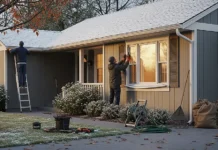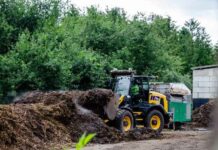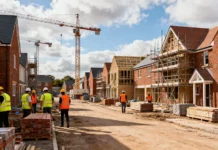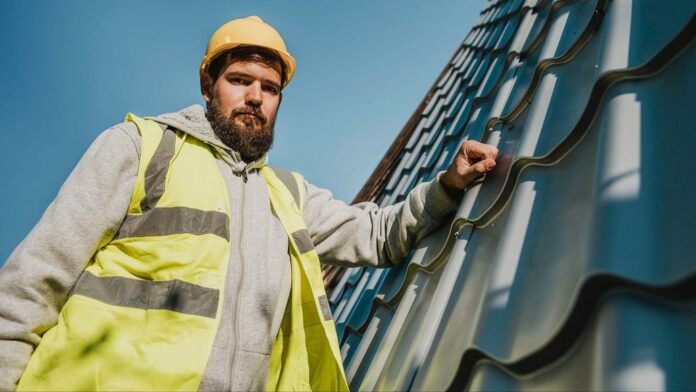Roof replacement costs are climbing fast in 2025.
If you plan to repair or replace your roof this year, you’ll likely feel the impact.
Knowing why prices are rising helps us make smarter decisions. This article explains what’s causing the hike, how much more you can expect to pay, and what you can do to stay ahead.
Here’s what we’ll cover:
- The exact cost increase and timeline
- The economic factors pushing prices up
- Extra influences like project complexity and inflation
- Budgeting tips to avoid surprises
- How the roofing industry is adapting
Let’s break it down.
Overview of the 2025 Roofing Price Increase
Major roofing manufacturers have announced price increases of 6-10% starting April 2025. These increases affect asphalt shingles, metal roofing, and accessories across the board.
This means the average roof replacement, which cost around $18,000 last year, could jump to $19,800 or higher (use Instant Roofer to get up-to-date prices in your area).
That amount isn’t just chump change. For most of us, that’s an extra $1,800 we didn’t plan to spend.
Why does it matter?
If you wait too long, you might lock in the new, higher prices. Acting early could help you save thousands.
Key Economic Factors Driving Roofing Cost Increases
Let’s look at what’s causing prices to rise.
A. Rising Material Costs
Roofing materials are getting more expensive, and here’s why:
- Asphalt shingles, made with petroleum, are affected by global oil price increases
- Fiberglass matting, sealants, and adhesives cost more due to production slowdowns
- Tariffs on imported steel and aluminum are now at 25%, pushing metal roofing prices higher
| Material Type | 2024 Price (Per Sq. Ft) | 2025 Price (Est.) |
| Asphalt Shingles | $4.25–$8.50 | $5.60+ |
| Metal Panels | $7.00–$14.00 | $8.50+ |
| Synthetic Shakes | $10.00–$16.00 | $11.50+ |
B. Labor Shortages and Increased Labor Costs
Roofing companies are facing a shortage of skilled workers.
Here’s what’s happening:
- Labor costs are up 5–10% due to high demand and limited workers
- Wages, insurance, and safety compliance rules are adding extra costs
- Labor usually makes up 40–50% of the total roofing bill
This implies that we’re not just paying for materials—getting a crew is more expensive, too. The apparent shortages also mean longer wait times and higher costs to secure qualified professionals.
C. Supply Chain Disruptions
Getting materials from factories to your home costs more:
- Transportation delays continue to slow deliveries and affect delivery timelines
- Fuel price hikes increase the shipping costs
- Trucking shortages make it hard to get materials on time
- Builders are quoting longer wait times, which can lead to unexpected delays
This unpredictability means contractors often increase prices to cover their risk.
D. Increased Demand and Weather-Related Factors
Demand for roofing is stronger in 2025.
Here’s why:
- Growth in commercial and residential construction is stretching supply
- More weather damage repairs from storms and hurricanes
- Stricter building codes in high-risk zones require more durable (and costly) materials
If you live in a place with heavy rain, snow, or wind, your roofing costs may be even higher.
| Region | Avg. Price Increase | Main Factors |
| Northeast | 8-12% | Winter storm damage, stricter codes |
| Southeast | 7-10% | Hurricane repairs, high demand |
| Midwest | 6-9% | Hail damage, labor shortages |
| West | 9-14% | Wildfire rebuilding, material shipping costs |
Additional Influences on Roofing Costs
Beyond big-picture economics, a few other things also impact what you pay for.
- Inflation: General inflation raises the cost of all construction materials
- Roof size and design: Steep, complex roofs take more time and materials
- Seasonal trends: Prices spike during peak seasons (spring and summer)
| Project Factor | Cost Impact |
| Steep slope | Higher labor cost |
| Large square footage | More materials |
| Custom ventilation | Extra installation |
| Off-season scheduling | Possible discounts |
How Homeowners Can Prepare and Budget for Rising Costs
We can still take action to avoid being caught off guard.
Here’s how:
- Get estimates early: Lock in pricing with a written quote before the next hike
- Compare multiple quotes: Ask at least three for detailed breakdowns of materials, labor, and timeline
- Build a buffer: Set aside an extra 10–20% more than the estimated cost to cover unexpected issues
- Consider financing: Look into payment plans, roof loans, or local grant programs
Tip: Break your project into phases. Replace the most damaged sections first while budgeting for the rest.
Industry Responses and Innovations
Roofing companies aren’t just raising prices—they’re also finding ways to work smarter.
Let’s look at what’s changing:
New Materials
- Composite shingles that use less petroleum
- Recycled materials that reduce reliance on new resources
Technology Improvements
- Drone roof inspections that save time and improve accuracy
- AI estimation tools that reduce waste and improve quote accuracy
Business Practices
- Bulk purchasing by contractor groups
- Direct factory relationships that bypass middlemen
These innovations help offset some cost increases but won’t eliminate them entirely.
Final Thoughts
Roof replacement in 2025 is more expensive, and that trend won’t reverse anytime soon.
Here’s what’s driving the hike:
- Material costs from oil prices and tariffs
- Labor shortages and rising wages
- Ongoing supply chain problems
- Growing demand, especially in storm-prone regions
But if you plan ahead, shop smart, and act early, you can still manage your budget and get the work done before prices climb even higher.
Don’t wait too long—get your quotes now and stay in control of your roofing costs.
































